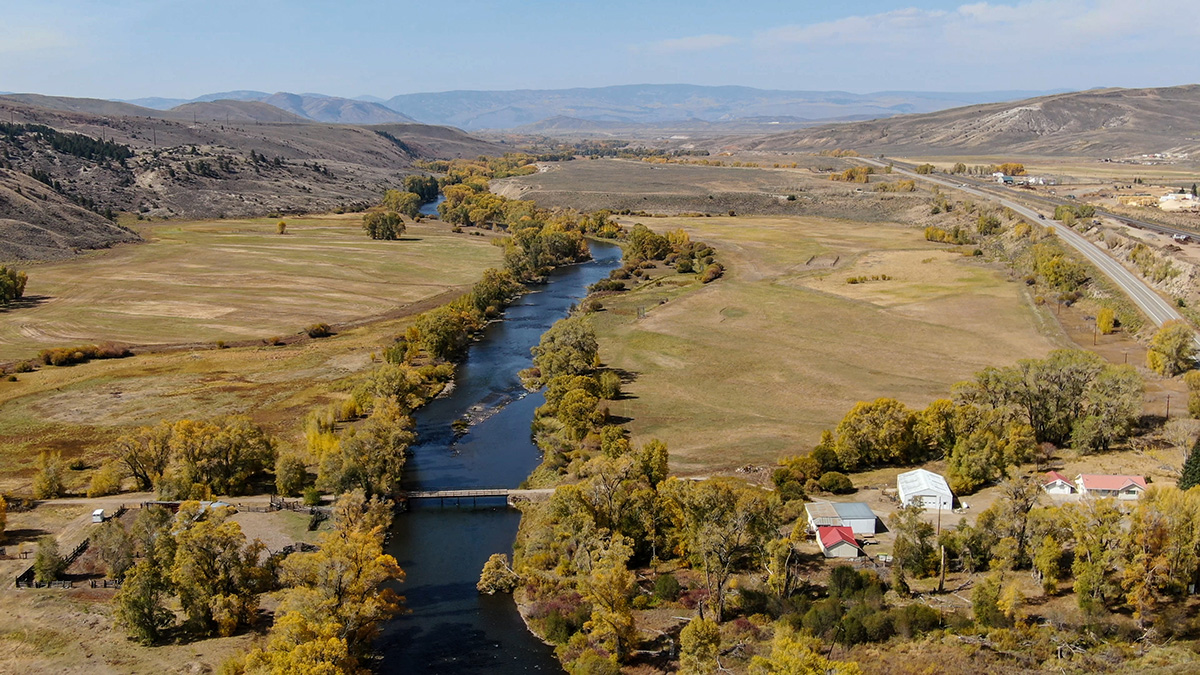A 23-year-long drought exacerbated by climate change has taken a toll on the Colorado River. From 2000 to 2014, the flow of the lifeblood of the American West declined to only 81% of its 20th-century average, and water levels in the river’s two main reservoirs have sunk to record lows. The concern is that in the future, levels could sink enough to reach “dead pool”—the critical point at which the river can no longer provide water and electricity to Arizona, Nevada, and Southern California.
“We can’t possibly keep drawing the same amount of water out of the Colorado River and expect not to see this crisis continue.”
In the fall of 2022, in response to the crisis, the U.S. Bureau of Reclamation set an end-of-January-2023 deadline for the seven Colorado River Basin states to reach a consensus on water use reductions. Six of the seven states together submitted a last-minute proposal, but California, user of the greatest amount of Colorado River water, submitted its own separate proposal.
As temperatures increase with climate change, growing seasons lengthen, soils become drier, and more water is lost to evaporation. Consequently, it is imperative to act as soon as possible to reduce water use, said Christopher Skinner, a member of the NOAA Drought Task Force. “We can’t possibly keep drawing the same amount of water out of the Colorado River and expect not to see this crisis continue,” Skinner said.

Reconsidering a Century-Old System
The basin states have been concerned about securing their share of the river’s water for more than a century. In 1922, the seven states met in New Mexico to discuss, negotiate, and ultimately work out a compact apportioning the river’s water between the upper basin (Colorado, New Mexico, Utah, and Wyoming) and lower basin (Arizona, California, and Nevada) states. The compact forms the cornerstone of the Law of the River—a broad term referring to the many laws and regulations that regulate the use of the river’s water.
On the basis of hydrologic data collected at the time—during an anomalously wet period—the compact apportioned 7.5 million acre-feet of water from the Colorado River annually to both the upper basin and the lower basin. But those data proved to be an overestimate of the average amount of water available each year, and the Colorado River was already over-allocated more than 100 years ago.
Fast-forward a century, and streamflow drought has intensified in the United States, and the flow of water in the Colorado River has diminished by nearly 20%, meaning there is even less water to meet the allocations. The Colorado River Compact defined a “rights by prior appropriation” strategy for dividing up the water in the basin. Those who claimed first historically had senior water rights and have first rights to the water. When there is not enough water, it’s the junior who suffers the cuts.
From a scientific perspective the calculations are simple: To continue to support the 40 million Americans that rely on the river for their drinking water and the basin’s agricultural industry, the states have to reduce their water use. But determining which states should bear the brunt of the cuts has proved more complicated.
Consequently, as the states have been unable to reach a consensus, on 11 April the Bureau of Reclamation stepped in with a draft analysis weighing options for water use reduction. One option, which is aligned with the current Law of the River, considers making reductions based on the seniority of water rights. This strategy means that some users in Arizona would face drastic reductions, and the water allocations to the cities of Tucson and Phoenix could be slashed. California, however, would not have to make cuts.
“This business-as-usual approach means the lowest-priority users take the biggest cut, and that is surely not going to work,” said Jack Schmidt, director of the Center for Colorado River Studies at Utah State University.
“It is time for a fundamental restructuring of how we think about water allocation in the Colorado River system.”
An alternative, unprecedented approach outlined in the analysis would be to divvy the cuts up evenly among the lower basin states, reducing the water allocated to California, Arizona, and Nevada. Everybody taking the same proportional cuts might be okay in the near term, but sustainability in the long term requires more targeted and thoughtful analysis, Schmidt said. “But if it’s an incremental step towards people saying that we have to move beyond the limits of the Law of the River, then it’s a first step,” Schmidt said. “And we have to start somewhere.”
Schmidt pointed out that the Law of the River has always progressively changed in increments, and the current situation, exacerbated by a warming climate, would call for further changes. “That said, it is important for the federal government to exert its leadership because the states have recently not been able to reach an agreement,” Schmidt said.
The Bureau of Reclamation’s proposals to cut water allocations for lower basin states are part of a supplemental environmental impact statement for the Colorado River. The Interior Department will release its final analysis of the options—including other possible solutions—this summer. At present, thanks to above average snowfall and a wet winter, “dead pool” won’t happen this year, and a major crisis has been averted until 2024 at the earliest. For policymakers, that has created some breathing room to consider what modifications to the Law of the River are needed.
“It is time for a fundamental restructuring of how we think about water allocation in the Colorado River system,” Schmidt said.
—Jane Palmer, Science Writer

